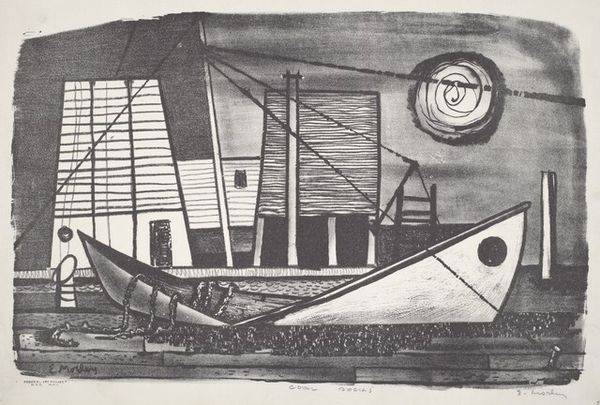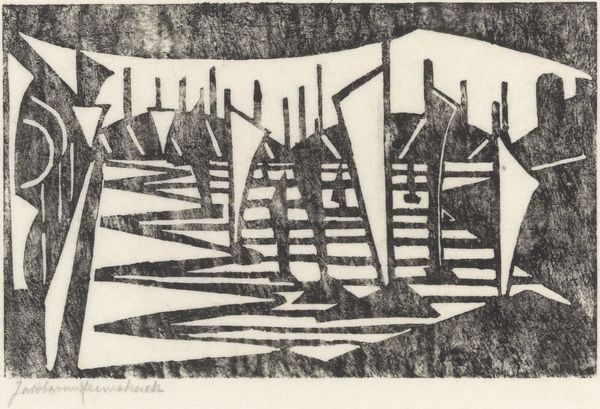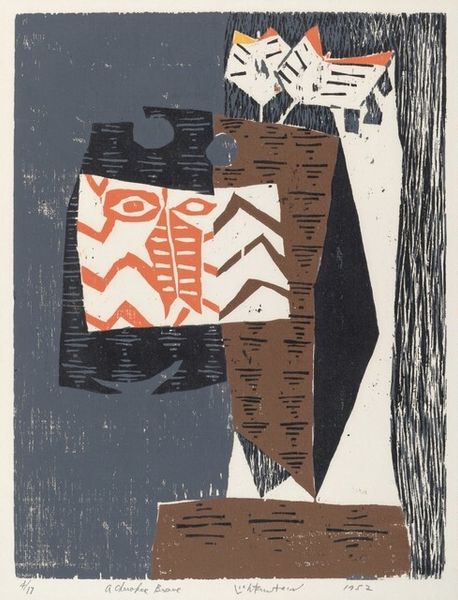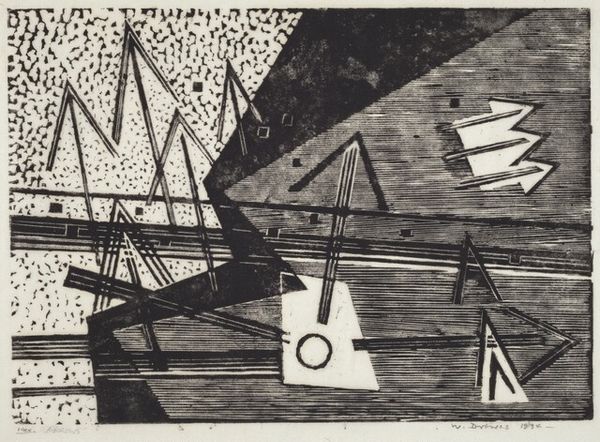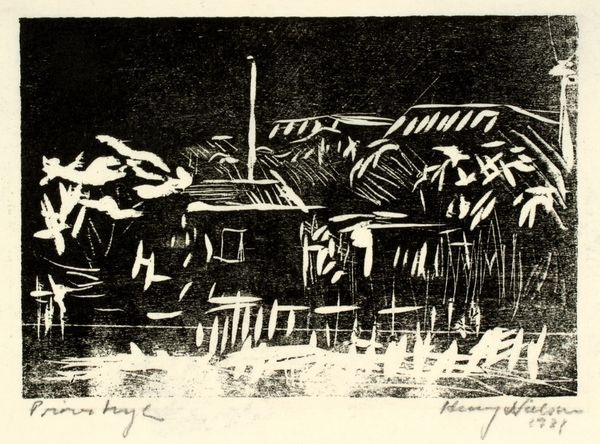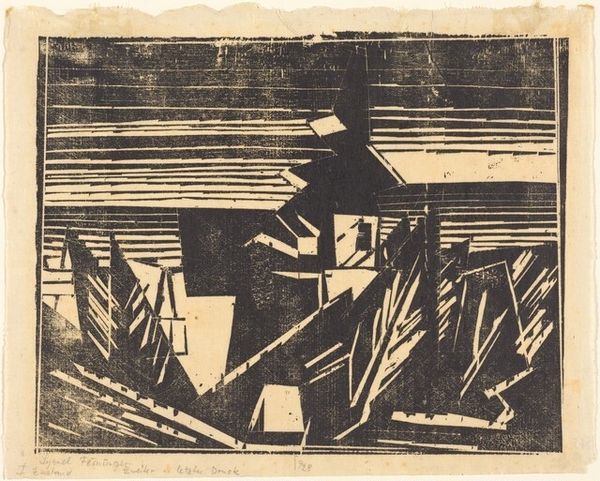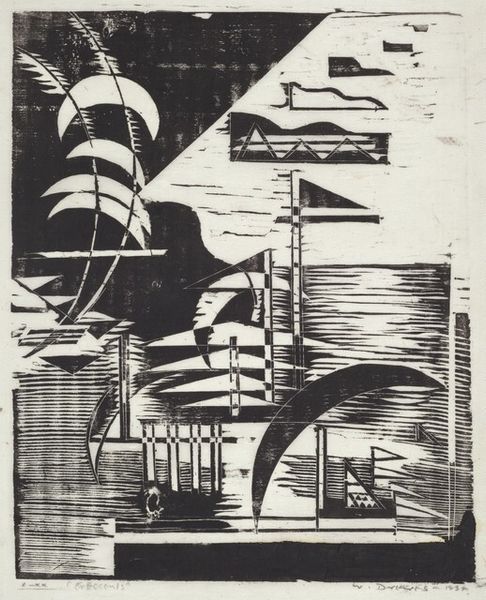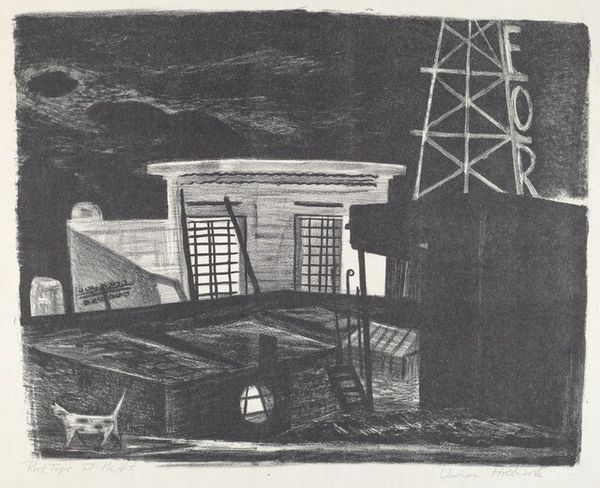
print, woodcut
# print
#
landscape
#
woodcut
#
cityscape
#
modernism
#
realism
Dimensions: overall: 51 x 33.5 cm (20 1/16 x 13 3/16 in.)
Copyright: National Gallery of Art: CC0 1.0
Curator: What strikes me immediately is the movement—a city breathing in woodcut form. The inky sky curls like seafoam above the stoic geometry of the pier and its loaded bounty. Editor: Indeed, Antonio Frasconi's "The Fulton Fish Market" from 1953 really captures the vibrant pulse of a working waterfront. I think its historical context provides even deeper resonance. Curator: Ah, context! Yes, tell me more! What about this image transports us to that era beyond just the visible details? Editor: Well, Frasconi, an immigrant artist, often focused on the lives of working-class people. This particular piece, through its dynamic portrayal, quietly emphasizes the labor involved in providing sustenance for the city. Curator: There’s a kind of rough beauty, isn't there? The stark contrast heightens the drama. I wonder, do you see it as simply a depiction of commerce, or does it hint at something more? Perhaps the inherent risks, the ecological implications... Editor: It’s layered, I believe. It offers a commentary on consumption. The market stands as this intermediary space between ocean ecology and urban hunger, almost creating an abstracted visual poem of ecological tension and resource exchange. It speaks to migration as well, connecting global food systems to immigrant labor and consumption. Curator: I'm drawn to how the composition is broken up—horizon line bisecting the pictorial space, and this frothy, almost tempestuous sky pressing against it from above. Feels volatile. Does it communicate something larger about that particular historical moment? Editor: It absolutely does! Emerging from the war and facing new waves of migration, mid-century America experienced this convergence of burgeoning consumption and deep economic divides. The turbulent sky you perceive mirrors that moment of tension and transition. Curator: Well, you’ve given me much to reflect on! Now when I see this print, it will always trigger both an immediate sensory experience, and that essential "why" that pushes us to look closer at the story an artwork tells about the world beyond its frame. Editor: Exactly, it's the dialogue between those two perceptions that truly makes viewing worthwhile, allowing the art to speak to both our emotions and our sense of social awareness.
Comments
No comments
Be the first to comment and join the conversation on the ultimate creative platform.



